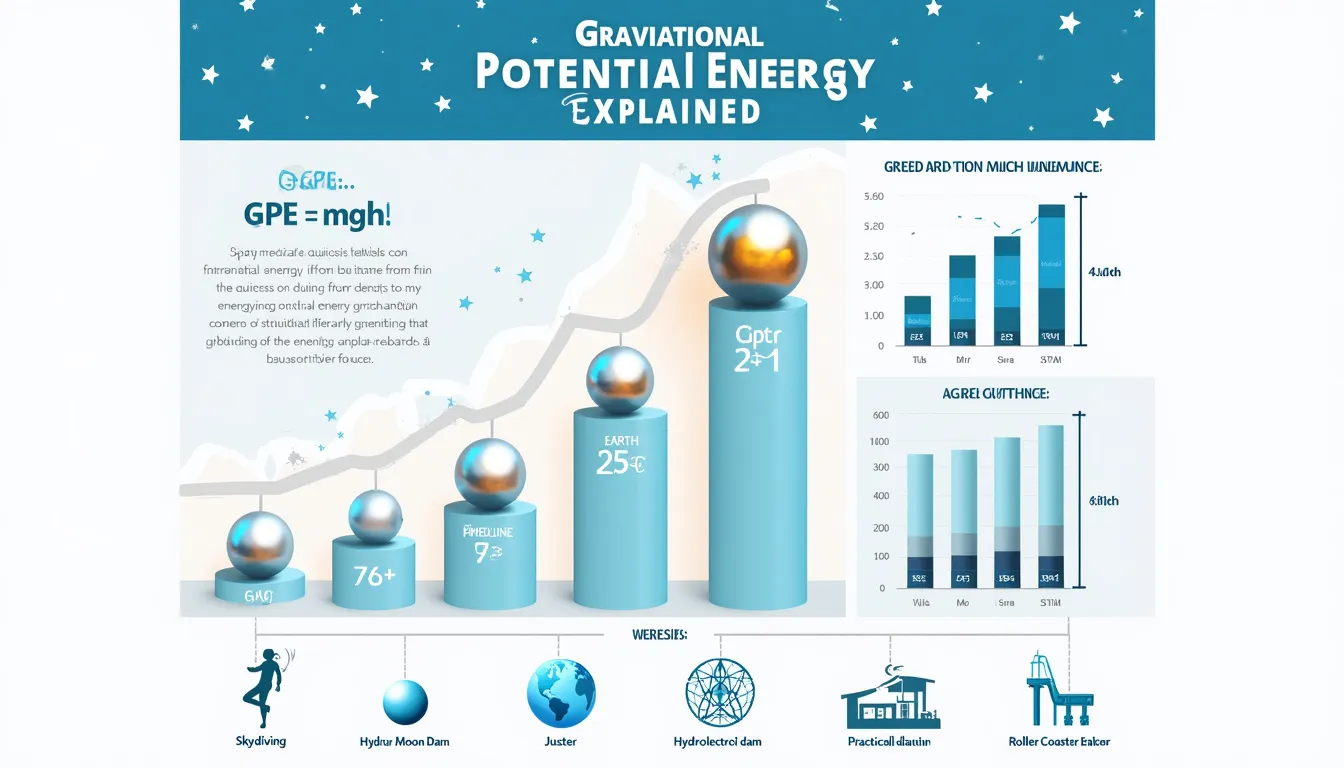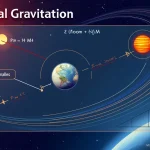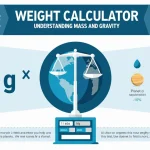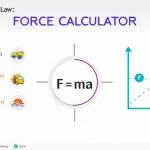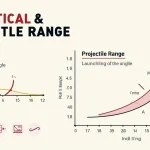Gravitational Potential Energy Calculator
Is this tool helpful?
How to use the tool
- Mass (kg) – type the object’s mass. Example inputs: 2.3 kg (toy drone) or 120 kg (industrial crate).
- Gravitational field strength (N/kg) – enter local gravity. Example inputs: 1.62 N/kg (Moon) or 24.79 N/kg (Jupiter).
- Height (m) – add vertical distance from reference level. Example inputs: 3 m (warehouse shelf) or 200 m (wind-turbine hub).
- Press Calculate; the result appears instantly in Joules (J).
Formula
The tool applies:
$$ GPE = m \times g \times h $$
- m = mass (kg)
- g = gravitational field strength (N/kg)
- h = height (m)
Example calculations
- Drone on Moon: 2.3 kg × 1.62 N/kg × 3 m = 11.18 J
- Crate on Jupiter: 120 kg × 24.79 N/kg × 200 m = 595,000 J
Quick-Facts
- Standard Earth gravity = 9.80665 N/kg (CODATA, 2022).
- SI unit of energy is the Joule, defined as kg·m2/s2 (BIPM SI Brochure, 2019).
- Moon surface gravity ≈ 1.62 N/kg (NASA Fact Sheet, 2023).
- Jupiter surface gravity ≈ 24.79 N/kg (NASA Fact Sheet, 2023).
FAQ
What is gravitational potential energy?
Gravitational potential energy (GPE) is the work stored in an object because you lifted it within a gravitational field (Halliday & Resnick, 2018).
How does the calculator work?
The script multiplies your mass, local gravity, and height inputs, then rounds to two decimal places for a Joule output.
Why enter gravity instead of using 9.8 N/kg?
Gravity varies by planet and altitude; using the correct value keeps calculations accurate for missions or lab demos (NASA Fact Sheet, 2023).
Can I use negative heights?
No. The reference level is zero; negative values represent depths and require different sign conventions in physics texts (Serway, 2020).
Is air resistance included?
No. GPE depends only on position in a conservative gravitational field, independent of drag forces (BIPM, 2019).
What’s the energy of 1 m³ of water (≈1000 kg) 50 m high on Earth?
1000 kg × 9.80665 N/kg × 50 m ≈ 490 kJ; hydro engineers call this “gross head energy” (IEA Hydropower Report, 2022).
Does mass change with location?
Mass remains constant; only weight and GPE vary with gravity (“Mass is invariant in classical mechanics,” ISO 80000-1).
Quote from a standard?
“One Joule is the work done when the point of application of one Newton is displaced by one metre” (BIPM SI Brochure, 2019).
Important Disclaimer
The calculations, results, and content provided by our tools are not guaranteed to be accurate, complete, or reliable. Users are responsible for verifying and interpreting the results. Our content and tools may contain errors, biases, or inconsistencies. We reserve the right to save inputs and outputs from our tools for the purposes of error debugging, bias identification, and performance improvement. External companies providing AI models used in our tools may also save and process data in accordance with their own policies. By using our tools, you consent to this data collection and processing. We reserve the right to limit the usage of our tools based on current usability factors. By using our tools, you acknowledge that you have read, understood, and agreed to this disclaimer. You accept the inherent risks and limitations associated with the use of our tools and services.
